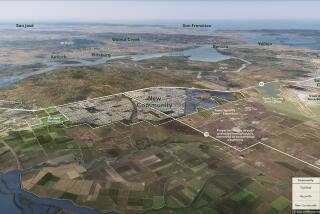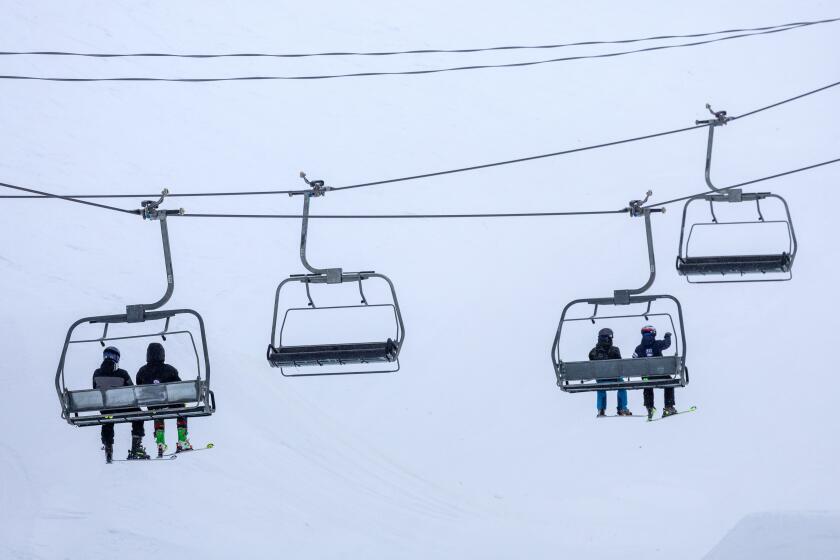Palmdale Council to Consider Park Expansion Vote
- Share via
The brochures touting the most ambitious park plan in Palmdale’s 40-year history feature illustrations that look like paradisiacal visions from other desert cultures: heavy on the fountains, shimmering blue swimming pools and cool green fields.
For resident Jodi Elam, it’s a testament to the special importance that city dwellers in the Mojave Desert place on their parks, which can serve as irrigated oases in this beautiful but sometimes harsh environment.
“We’re surrounded by so much dirt that we really love grass,” Elam said. “Grass is a big deal to us.”
Palmdale’s affordable housing has made it the fastest-growing city in Los Angeles County, and city park officials say the 69.5% population boom over the last decade has strained their parks and sports facilities. Consequently, they’re recommending the City Council approve a motion to put a $38-million park expansion proposal in front of homeowners in a June mail-in vote.
The plan, which the council will consider today, calls for 73 acres of new parkland, expanding Marie Kerr Park on the city’s west side and creating a 33-acre park on the east side.
Eleven sports fields and an amphitheater would be added. The east-side park would be the site of an $8.5-million family aquatic park, with water slides, water cannons and swimming pools.
Palmdale has about 477 acres of developed and undeveloped parkland to serve 116,000 residents.
That ratio is about par for the urbanized areas of Los Angeles County, which have about four acres of land per 1,000 residents, according to Larry Kaplan, the California director of the nonprofit Trust for Public Land. Most park advocates believe those numbers are inadequate: The National Recreation and Park Assn. recommends 6.25 to 10.5 acres of usable parkland per 1,000 people.
Jim Lasagna, Palmdale’s city parks director, said the city has been feeling the crunch. Young families attracted by the city’s inexpensive housing are finding their children regularly being put on waiting lists for city-sponsored swimming lessons and sports leagues, he said.
“We now have a shortage of facilities,” Lasagna said. “Getting kids into swimming lessons in the summer is a very difficult process.”
But getting a majority of voting homeowners to support the measure might be just as difficult. About $26 million of the funding for the project would come from a $36 annual tax on homeowners that would last 30 years, with the rest coming from state funds and local environmental impact fees.
Although no organized opposition has emerged, park supporters know Palmdale homeowners are especially wary of new property assessments. Two school bond measures were rejected in 1996 and 1997, and a $25-million school bond barely passed last year after a state law lowered the votes needed for passage from 67% to 55%.
Resident Mary Spiva said while she’s all for strolling in the grass, she doesn’t believe parks should be the city’s top priority. “If they’re going to tax me with a bond, I’d rather pay for law enforcement,” she said.
A city-sponsored poll in 2000 showed 63% of voters would support the parks measure.
Kaplan lauded Palmdale for considering setting aside more parkland now, when open space is still plentiful.
Elam, who sat on an advisory board that helped draft the park plan, agrees.
“Look at L.A.,” she said. “L.A. is built out, and you can’t go back and unbuild.”
“We have an opportunity to build these parks now so they will be there forever.”
More to Read
Sign up for Essential California
The most important California stories and recommendations in your inbox every morning.
You may occasionally receive promotional content from the Los Angeles Times.









